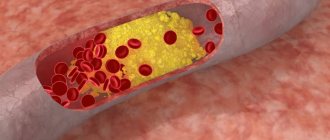Stuttering is a violation of the tempo and rhythm of speech organization, which is associated with a convulsive (contracted) state of the muscles that form speech. Stuttering is known as one of the ancient speech disorders. The essence of this condition, the mechanisms of its development, causes, symptoms and approaches to treatment differed significantly in different periods of the development of speech therapy. Different views on this problem are due to different levels of science, teachings and schools dealing with this condition. In this article we will approach this topic from the perspective of modern teachings and achievements in the field of treatment of this condition.
Stuttering is known as one of the ancient speech disorders.
Causes of stuttering
There are 2 types of causes of stuttering. The former create a predisposition, the so-called “soil” for the development of the disease. The second group of reasons are “impetuses” to development, reasons.
Predisposing reasons
A combination of one of the following unfavorable conditions and a strong irritant (stress) is enough for the development of stuttering in a child.
A lot depends on the parents. If parents have the so-called Neurotic burden, which includes infectious, neurological and other diseases that negatively affect the functions of the nervous system, then all these factors can affect the child. Infections can be transmitted, and increased irritability can negatively affect the child’s mental state.
A lot depends on the parents.
When we evaluate developmental causes, it is important to look back to the period before, during and after childbirth. It is necessary to study the presence of birth injuries, infections, asphyxia and other factors that may affect the functioning of the brain. It is equally important to study the child’s family, because it is likely that among his blood relatives there may be people who stutter.
As for the child’s body, it is necessary to pay attention to its neurogenic characteristics and constitutional predisposition. These reasons include increased vulnerability and irritability, nightmares, enuresis, and diseases of the nervous system. Of course, we should not forget that a child may go through a stage in which age-related anatomical and physiological features of the central nervous system are present.
And of course, one of the most important things is that the child should not feel disadvantaged in the family, should not face alienation and misunderstanding on the part of the parents. It is important to ensure that the baby has enough positive emotions that he receives with his parents.
Producing causes
Quite often, stuttering develops against the background of organic (physical) diseases of the brain, which lead to disturbances in the speech-motor system.
Stuttering often develops against the background of infectious and physical diseases.
Infectious processes accompanied by the development of encephalitis and meningitis can lead to depletion of the nervous system and weaken the centers responsible for the movements of the speech-motor apparatus (measles, whooping cough, meningococcal infection).
Many ENT diseases (laryngitis, tonsillitis, sinusitis) lead to changes in the timbre and intonation of the voice, which also negatively affects the formation of speech.
Mental trauma accompanied by severe fear or fright.
A significant reason is inadequate upbringing of the child. This may include increased demands from the child in learning, the formation of the phenomenon of “exemplary” behavior.
Negative, negative attitude of parents towards the child (severity, anger, strictness).
An equally important reason is the child’s unexpected shock, which can be both positive and negative (“excessive” excitement, stressful situations at school, stressful situations in the family).
Simultaneous acquisition of different languages at an early age causes stuttering, usually in one language
In the case of a child learning several languages at an early age, which leads to increased load on various centers of the brain.
Imitating people who stutter.
How to behave correctly for mothers and fathers of children suffering from stuttering?
- Reduce any emotional stress on the child. Protect your baby from listening to loud music, aggressive games, and watching TV for long periods of time.
- Get your child used to listening to calm classical music
- Play with your baby, read good fairy tales to him, tell him about all the positive emotions you received.
- · Monitor your child's rest. Follow the regime. Be sure to take walks, go into nature, do gymnastics
- Throughout the treatment of the pathology, it is important to provide the child with a friendly environment. You should not criticize or scold your baby if he still has a defect. On the contrary, it is important to encourage even the fact that the child has started treatment, is interested in it, and is not afraid to attend a speech therapist and other related classes.
Symptoms
The main symptom of stuttering is cramps (abnormal contraction of the muscles of the speech apparatus) during speech. Their duration can take from 1-2 to 12-13 seconds, and in some severe cases reach 80 seconds or more.
Be attentive to your child and help him overcome or prevent the development of stuttering.
In children with stuttering, the sequence in the pronunciation of individual words is also disrupted; children lose their train of thought due to pronounced pauses, experience emotional distress and, as a result, acquire character traits of a “defective” person.
Let us dwell in more detail on the feeling of inferiority, since this symptom largely determines the further development and course of stuttering in a child. This feeling is also called “painful fixation” of a stutterer.
There are three degrees of “painful fixation”:
- First Art. (children feel comfortable, and they do not experience embarrassment or shame due to a speech defect).
- Second Art. (children lose a sense of comfort, experience moderate embarrassment, shame due to a speech defect, and try to disguise it)..
- Third Art. (pronounced concentration on their speech impediment, experience severe embarrassment, shame. Usually this degree is noted in children of senior school age).
The effectiveness of treatment for children who stutter directly depends on the degree of “painful fixation.” The higher the fixity, the less favorable the prognosis for speech therapy work.
There are three degrees of stuttering:
- minor - stuttering appears only during excitement (expressed emotions) and during rapid speech.
- moderate - do not stutter at rest and in normal surroundings; Only when emotions are expressed does stuttering appear.
- pronounced - they stutter constantly.
Clinical picture
The main symptom of logoneurosis, which is included in the clinical picture, is stuttering. This concept can also include:
- repeated repetition of individual words or syllables that a person is not able to control;
- stretching or lengthening a word;
- increased tone of the facial muscles;
- respiratory spasms;
- high activity of facial expressions.
One of the obvious signs of speech logoneurosis is the presence of spastic breathing. Breathing is directly related to the voice, articulation, and movement of the larynx. Impaired respiratory activity leads to intermittent speech. If attempts are made to cope with this, the hitches only become more obvious and pronounced. Logoneurosis according to ICD 10 has code F-98.5. This is a group of disorders that begin in childhood.
Symptoms and types
There is a classification of logoneuroses. As it progresses it can be:
- Permanent. It appears constantly and in all forms of speech.
- Recurrent. appears and disappears without reference to various factors. Normal speech can be maintained for a long period.
- Wavy. The speech disorder subsides and then recurs.
According to the type of seizures, logoneurosis is divided into:
- Tonic type. Muscle contractions occur over a long period of time and have great force.
- Clonic. Alternating short spasms.
- Mixed. Both types are observed.
According to its clinical form, logoneurosis in children is classified into neurotic and neurosis-like. The neurotic type occurs in the absence of intrauterine or birth injuries and pathologies. The cause of this form is often psychological trauma or the introduction of a second language in early childhood. This type of logoneurosis is functional in nature, in which the brain structure is not damaged. That is why it is easier to treat.
Neurosis-like stuttering is often diagnosed in women during pregnancy, which is accompanied by toxicosis and injuries. In this case, speech disorders occur due to damage to the brain, its speech center. Clear manifestations are noticeable at the age of 3-4 years, when the child begins to actively talk, construct complex sentences, and communicate with others in separate structured phrases.
Degrees of the disease
There are three degrees of severity of logoneurosis:
- mild form - isolated convulsions are observed in spontaneous speech;
- medium – convulsions appear when speaking, but the person can speak absolutely normally for a long time;
- severe - speech convulsions are observed in any situation, including if a person is talking to himself.
This division is of a formal nature. Most experts note this classification as untenable, since it depends on many factors - time, specific situation, place.
Survey
The examination of such children should include consultation with specialists:
- speech therapist;
- neurologist;
- psychologist;
- if necessary, consult other specialists.
The main specialist involved in the treatment of stuttering in children is a speech therapist.
In the process of working with children, the speech therapist uses various textbooks, poems, fairy tales, and selects special toys.
The purpose of the examination is to determine the frequency, source of occurrence and form of speech spasms. The degree of stuttering and the patient’s speech abilities are also assessed. The second plan, if any, indicates accompanying speech defects.
At the end of the conversation with the patient, the speech therapist formulates a final conclusion.
How to treat logoneurosis
Logoneurosis in children should be treated by various specialists, primarily speech therapists and psychotherapists. The latter is the main guarantee of effective therapy. Along with it, speech training, development of self-control, and improvement of intellectual capabilities should be carried out. Specialists use various approaches - the use of medications, physiotherapy, exercise therapy and others. Along with appropriate psychotherapy, this will maximize the elimination of these speech defects.
Treating logoneurosis in adults and children is a complex process that requires a lot of effort and time. In the case of a child, you will have to reconsider your relationships within the family, eliminate all conflicts between parents, and create a favorable atmosphere. A child should not suffer from his speech defect, otherwise he may develop an inferiority complex and other mental disorders.
Clinical therapy
Logoneurosis in adults can be treated using sedatives that have a calming effect on the nervous system. As an addition, you can include drugs that improve the overall functioning of the brain and its blood circulation. It is important to remember that such drugs should be prescribed exclusively by specialists.
Principles of psychotherapy
If logoneurosis or stuttering is based on psychological trauma, it is necessary to accurately establish its cause. To determine organic lesions in the brain, it is necessary to perform an MRI or CT scan. The treatment itself can be divided into two types - correction of neurological or psychological manifestations. Any logoneurosis is a multicomponent disorder that also requires a comprehensive solution. Each patient requires a special approach, developed exclusively for him. This applies to both children and adults.
A psychotherapist must work to eliminate psychological problems. A specialist conducts individual sessions to find the most optimal solution. Sometimes hypnosis, auto-training, and other techniques are used. These techniques are aimed at restoring the patient’s self-confidence and eliminating complexes associated with stuttering. As practice shows, for the treatment of stuttering in adults, hypnosis shows good effectiveness. After the sessions, the patient receives a recording of his own speech so that he can make sure that stuttering is significantly reduced or completely eliminated.
Speech therapy classes
Sessions with a speech therapist can help you get rid of logoneurosis. These techniques are designed to eliminate speech defects, provide clear and intelligible sound pronunciation, and make the patient’s speech fluent.
Primary therapy is carried out together with a speech therapist. Later, you can practice oral speech with your child on your own. The classes themselves can be individual or group. There are several methods for treating logoneurosis in children that have proven effective:
- Method of Vygodskaya, Uspenskaya and Pellinger. This treatment lasts 2-3 months and consists of 36 sessions. The basis of the technique is the creation of situations that form independent speech in the child. The entire lesson is conducted in a playful way, which makes it as comfortable and interesting as possible for him. In later classes, the specialist should help use detailed phrases.
- Smirnova's technique. Such classes are held every day, for about 20 minutes. The course lasts 30 weeks or one academic year. This program is designed to develop the rhythm and tempo of speech, improve fine motor skills, improve muscle tone, and also develop speech coordination.
- Silivestrov's technique. Treatment of logoneurosis in children lasts about 3-4 months and 32-36 lessons. This approach consists of three stages - preparatory, training, consolidation. At the first stage, a comfortable environment for the child is created, his verbal communication is narrowed. The second stage is a gradual transition from quiet to loud speech. At this stage, parents are also involved in the process. At the last, third stage, the child can independently construct a long conversation and read the text well and clearly.
- Shklovsky's technique. This course lasts about three months. The patient himself must be in a hospital setting. Psychiatrists, speech therapists, and neurologists work with him.
- Harutyunyan technique. The patient remains in the hospital for 24 days of therapy. Then 5 additional courses are conducted over one year.
Which method to choose in each specific case should be exclusively done by a specialist. Methods that are effective with children may not produce positive results with adults and vice versa.
Physiotherapy
Logoneurosis in children can be treated with complex therapy, which includes physical therapy. Exercise therapy for stuttering has some differences. It should affect all muscle groups and influence the stimulation and normalization of brain function. For adults, it is recommended to practice Nordic walking, skiing, and cycling. For exercise, you can use non-strength machines.
Such exercises are good for relieving nervous tension and affecting emotional stress. Logorhythmics exercises are good for young children. It is better to conduct classes outside and in the fresh air. Vitamin D, which is synthesized under the influence of sunlight, has a positive effect on the central nervous system.
Breathing exercises
Breathing exercises have the following effects on a child:
- coordination of rhythm and tempo of speech;
- learns to control his breathing, coordinate it with his speech;
- increase the tone of the abdominal wall;
- strengthen the diaphragm muscles;
- form breathing with the diaphragm.
Treatment of logoneurosis with breathing can take a very long time, sometimes even several years. For it to have the maximum effect, you need to perform the exercises correctly - you need to do them at least twice a day for 15 minutes.
Psychotherapy methods
These methods include two types of therapy - rational and suggestive. Additionally, the method of conducting auto-training is used. A rational method consists of a conversation with a specialist, who is called upon to form an adequate attitude of the patient to his problem. The suggestive method involves conducting one or several hypnosis sessions. Autotraining allows the patient to help himself independently. These skills are retained throughout life.
Gymnastics Strelnikova
This system consists of breathing exercises that were developed by this specialist. This approach has become widespread in medical science. It is aimed at eliminating diseases, including stuttering. It can be used for adults and children. Its main feature is its simplicity and proven effectiveness. The essence of the exercises is to alternate sharp breaths with simultaneous movements of individual parts of the body.
Competent help from a speech therapist
Any speech therapist is, first of all, a teacher who carries out correctional work in order to compensate for any speech disorders. Therapy should be carried out only after a systemic study of the existing physiological characteristics.
Recently, the treatment of logoneurosis in children and stuttering has changed markedly. This is due to the emergence of new methods, an increase in the number of specialists, and the emergence of new knowledge. Now you can look at getting rid of stuttering more optimistically and promisingly.
Treatment and prognosis
Today, the treatment of such children includes not only medical, but also pedagogical influence.
- Use of medications. A huge number of different groups of drugs can be used in the treatment of stuttering. Let's look at the most common of them:
- 1. Nootropics (piracetam, pantogam, pantocalcin, phenibut).
- 2. Sedatives (valerian, phenibut, glycine, persen, afobazole, adaptol, novo passit). It is worth noting that many nootropics also combine sedative effects.
- 3. Vitamins, especially B vitamins (combilipen, compligam B, larigama).
One of the treatment methods is sessions with a speech therapist.
There are a huge number of methods for overcoming stuttering in children, as well as groups of drugs that can be used in individual cases. Many of you are interested in the question: “Can we help a child on our own, at home and without running to doctors? Is it possible to completely cure stuttering in a child? There are separate techniques that allow you to improve pronunciation and so on by practicing at home, but they are also selected by a specialist. As for the forecast, there is no clear statement. It can be assumed that the younger the child, the more cheerful and positive his behavior, the fewer concomitant psychopathological disorders, the weaker the manifestations of seizures, the better the prognosis.
Prevention:
Stuttering can be prevented by creating a calm environment. Eliminating factors that can provoke stuttering attacks. Creating a favorable, calm environment. Lack of criticism regarding the child’s speech impediment.
General recommendations for the prevention of logoneurosis in children from 3 to 5 years old
- If a speech defect is detected in a child, you should protect him from anything that can cause emotional stress, including prolonged watching of TV.
- Play classical, relaxing music for your child - its healing effect has long been recognized even by official medicine. The music of Mozart, Beethoven, Grieg, and Chopin has a particularly beneficial effect on the children's psyche.
- You should not rely only on your own strength. Do not hesitate to contact specialists; the faster you can overcome a child’s stuttering, the easier it will be for him to communicate, learn, and explore the world.
- Classes with the child should be systematic. You can't take long breaks.
- Ensure your child sleeps at least 8 hours a day (daytime naps if necessary), and exclude active and computer games in the evening. Limit your time watching cartoons. Thus, the overstrain of the central parts of speech will be reduced.
- Organize proper communication. Talk to your baby calmly, slowly and smoothly, pronouncing all the words. When communicating with your child, try to use questions whose answers are simple and monosyllabic. If your child finds it difficult to pronounce a phrase on his own, say it together.
- Watch your diet. Vegetable and dairy foods should predominate in the diet. You should limit chocolate, sweets, spicy, salty and fried foods.
- Prevention of stuttering in neurologically and mentally healthy children is quite simple and consists of good family relationships. Where there are no conflicts, quarrels, and there is love and understanding, the child has much less risk of becoming a stutterer. Curing stuttering is much more difficult than preventing it. A child’s stuttering sometimes manifests itself so that parents understand their own mistakes.
- You cannot stop stuttering, you can only help, establish mutual understanding and cooperation with the child. And remember that love and faith in the baby’s abilities creates real miracles that even traditional medicine is not always able to explain. Believe in your child and he will succeed.
Disease prognosis
In the absence of adequate treatment, neurosis-like stuttering progresses. Speech disorders become stronger, and over time they are joined by other speech pathologies. Pronunciation is impaired, causing speech to become slurred and sentences to become illogical and meaningless.
The consequence of the disease is logophobia - fear of speaking. This provokes psychological deviations and forms complexes.
Timely therapy can stop the progression of the disease and prevent psychological defects. Speech becomes expressive, with the right pace and pauses. Treatment is usually long-term, in courses. For a good result, it is important to motivate the child and interest him.
Subsequently, he will be able to communicate with peers, get a profession, and feel confident in society. The pathology will not completely disappear, since organic brain damage cannot be eliminated. But with due diligence, patients gain the opportunity to lead a normal life with minimal speech impairment. A speech therapist will be able to give an accurate prognosis after an in-person examination and diagnosis.
Symptoms of neurosis-like stuttering in children
Symptoms of the disease begin to appear gradually. Typically, the debut coincides with the period of active development of phrasal speech at 3–4 years. A typical characteristic of neurosis-like stuttering is the presence of convulsions in the articulatory apparatus: tongue, lips, soft palate. They are most pronounced when pronouncing “b”, “p”, “g”, “k”, “d”, “t”.
The child’s speech activity is high, and he speaks quickly. Often the disease appears against the background of other speech disorders: dysarthria, dyslalia, or is one of the components of general speech development.
Such children, although they are distinguished by speech activity, speak indistinctly, monotonously and inexpressively. Uses distracting words. Sounds are muted. Speech is accompanied by stereotypical movements (tics) and gestures. At the same time, the movements are constrained and monotonous. Fine motor skills are not developed, facial expressions are poor. There may be problems with reading and writing.
Outwardly, the child looks clumsy and fussy. Another typical characteristic of neurosis-like stuttering is emotionality, impulsiveness, reaching the point of euphoria, rapid fatigue and exhaustion.
At the same time, the child is not critical of his condition, nothing worries him: there is no fear of communication, he easily makes contact. This leaves its mark on motivation: the baby does not strive to be cured, does not make any effort.
External symptoms are stable: their severity does not depend on the presence or absence of stress or psycho-emotional stress. Such guys also tolerate unfamiliar surroundings and a new team calmly. Exacerbation can be caused by high speech load, psychomotor agitation, fatigue, and concomitant diseases.
In adolescence, when patients begin to realize their condition, a neurotic component is added to the neurosis-like form of stuttering. Anxiety and fear of communicating with strangers appear.
Neurosis-like stuttering can occur in varying degrees of severity. The mild form is characterized by minimal symptoms with preservation of grammar. With moderate severity, statics and dynamics of movements suffer, and the structure of sentences is incorrect. A severe degree is accompanied by a disorder of motor function, speech impairment, even underdevelopment.









